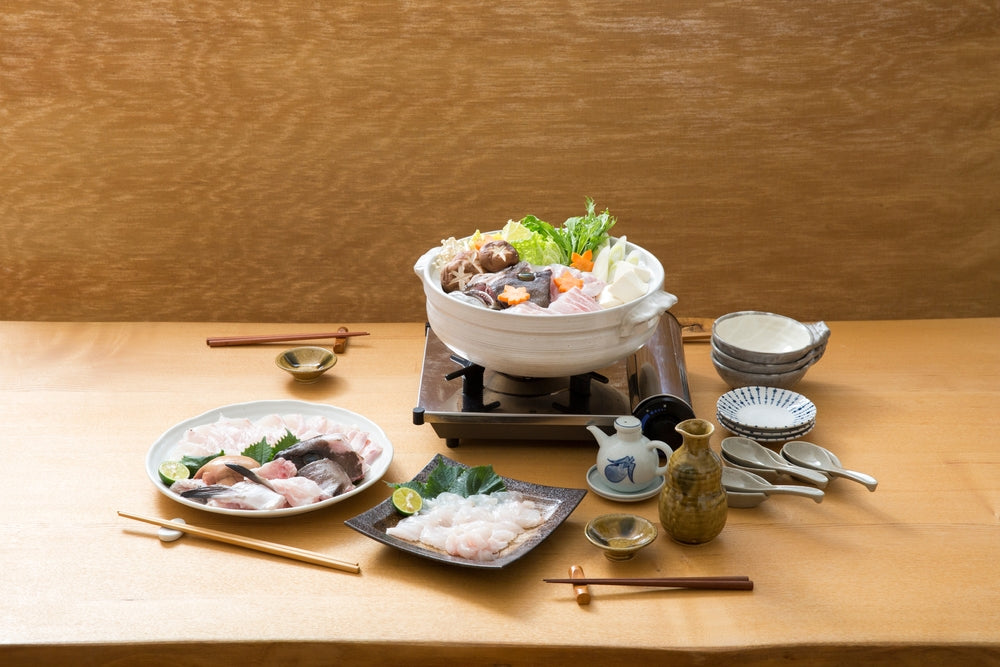The winter season is now upon us and the days are dark and cold. What's a better way to lift our spirits and keep chill at bay than good winter warming food, such as stew, casseroles and roast...yum! One of my favourites is to enjoy traditional Japanese Hot Pot.
What is ‘Japanese Hot Pot’?
When it comes to Japanese cuisine, a lot of people think of Sushi, Tempura, Teppanyaki, Sashimi etc. While we undoubtedly love these dishes, during the winter months, we often enjoy hotpot. In the UK, hotpot is referred to baked stew or casserole, but Japanese hotpot is different and it’s not cooked in the oven. Instead, you cook your ingredients, such as vegetables, fish and/or meat, in your preferred type of broth in a big ceramic cooking pot on a (often) portable stove.

Is it easy to make hot pot?
Yes, it is. It is a little bit like cooking dinner using slow cooker but it is much quicker! Preparation is straightforward: chop your ingredients into bite-sized pieces, prepare your cooking broth in a hot pot, then start cooking them by placing them into the hot pot! Simply put and cook them in the hop pot, wait until they are cooked to your preference, and then pick them up from the hot pot into your dish. Now, ENJOY!
Recipes for traditional hot pot
Feeling inspired to give it a go? Here are some easy recipes for the broth for you to try. Simply mix all the ingredients in a hot pot, if you have a portable stove, place it in the middle of the table and cook/simmer your favourite things to eat. You could use any vegetables, meat, poultry, fish etc. If you don’t have a portable stove, you can cook it on the normal stove of course!
Yose Nabe (my favourite, by the way!)
Soy sauce: 3 tbsp
Sake: 3 tbsp
Mirin: 2 tbsp
Dashi (powdered fish stock): 1 tsp
Water: 800cc

(Yose Nabe)
Chanko Nabe
Sake: 50cc
Ground garlic: 1 tsp
Ground ginger: 1 tsp
Salt: 2/3 tsp
Powdered Chicken stock: 1 tsp
Water: 550cc

(Chanko Nabe)
Sukiyaki
Soy sauce: 150 cc
Mirin: 100cc
Sake: 50cc
Sugar: 4 tbsp
Water: 100 cc
(for this broth I would recommend thinly sliced quality beef as it is the traditional way!)

(Sukiyaki)
Kimchi Nabe
Sake: 2 tbsp
Gochujang: 2 tbsp
Ground garlic: 2 tbsp
Miso: 2 tbsp
powdered chicken stock: ½ tsp
Water: 800 cc

(Kimchi Nabe)
You could use your normal large sauce pan for this, but if you want to try the authentic Japanese way, I recommend using a Japanese Hot Pot. As I mentioned above, most of the Japanese household own a portable stove, which you place in the middle of the table and everyone can serve themselves. To make more authentic, you may need a large serving plate to keep your cooking ingredients on side to top it up because you will probably not be able to put all the ingredients in one go. Cooking chopsticks, soup or Tayo bowls for each person to put their servings, soup spoons would be helpful to enjoy the tasty broth. Don’t have them all? Do not worry, The Japanese Shop got you covered. We have an extensive range of tableware, chopsticks and even hot pot etc. Have a browse and hope you find something to your taste.
Last but not least, The Japanese Shop would like to wish all our customers and readers have a wonderful festive season!
